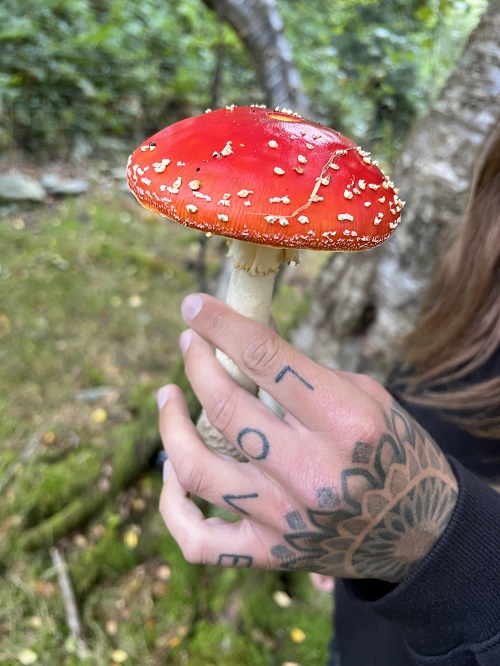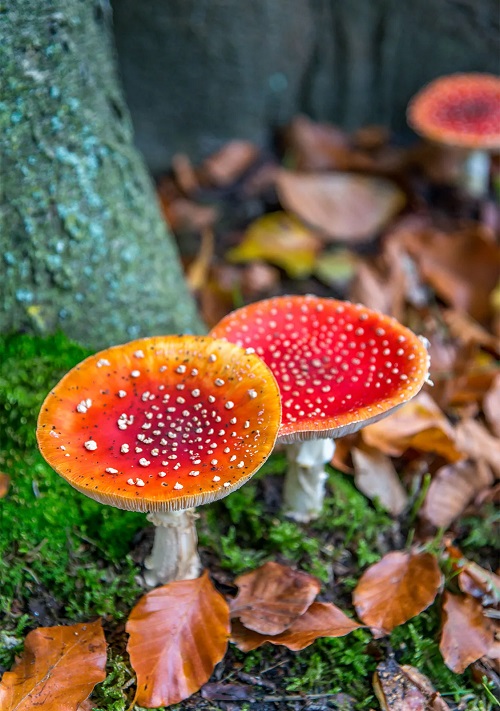Are you thinking about Growing Fly Agaric Mushrooms? Before you plan ahead, do give a thorough read to this article!
Growing Fly Agaric Mushrooms can be challenging but it is also not impossible! Let’s have a look at how to do it and whether it is legal or not.
Read How to Grow Magic Mushrooms here
What Are Fly Agaric Mushrooms
Fly Agaric mushroom, scientifically known as Amanita muscaria, is a well-known and distinctive species of mushroom. Here are some details and information about Fly Agaric mushrooms:
Fly Agaric is common in various parts of the world, including Europe, Asia, North America, and parts of South America. They are particularly associated with coniferous and birch forests.
This mushroom species has a distinct appearance. It typically has a bright red or orange cap that can reach up to 30-40 centimeters (12-16 inches) in diameter. The cap is often covered in white or yellowish warts. As the mushroom ages, the cap may fade and develop cracks. The stem is white and has a distinctive ring or skirt-like structure.
Fly Agaric mushrooms contain several psychoactive compounds, including muscimol and ibotenic acid. These substances can produce hallucinogenic effects when ingested.
However, it’s important to note that the effects can vary widely depending on the individual, the preparation, and the dosage. The psychoactive properties of Fly Agaric mushrooms have been known for centuries and have been used in various cultural and shamanic practices.
Find out if you Can Compost Mushrooms here
Propagating Fly Agaric Mushrooms

Propagation of Fly Agaric mushrooms is primarily achieved through the dispersal of its spores. However, cultivating this particular species can be challenging, and it is not commonly done for recreational or culinary purposes.
- Spore Collection: To propagate Fly Agaric mushrooms, you would need to collect the spores from mature mushrooms. This involves carefully removing the cap and placing it gill-side down on a piece of paper or foil. Allow the cap to sit for several hours or overnight to let the spores release.
- Spore Print: You will observe a distinctive pattern of white or cream spores on the paper or foil. This spore print can be used to inoculate a growing medium.
- Growing Medium: Fly Agaric mushrooms have a mycorrhizal association with certain tree species, meaning they form a symbiotic relationship with tree roots. Recreating this association in cultivation can be challenging. The ideal growing medium would consist of a mix of organic matter and the appropriate tree root symbiont. Specific recipes for Fly Agaric mushroom cultivation are not widely available due to the complexity of the process.
- Inoculation: Once you have prepared the growing medium, you can attempt to inoculate it with the collected spores. This involves carefully transferring the spores from the spore print to the growing medium and providing the appropriate environmental conditions for their germination and growth.
- Environmental Conditions: Fly Agaric mushrooms typically prefer cool and humid environments. Temperature, humidity, light, and air circulation are all factors that need to be carefully controlled to create optimal conditions for their growth.
Requirements for Growing Fly Agaric

Sunlight
Fly Agaric mushrooms are typically grown in the understory of forests, where they receive indirect sunlight. They prefer partial shade rather than direct sunlight.
When cultivating these mushrooms, it’s best to replicate this natural lighting condition by providing indirect or diffused light. Direct sunlight can be too intense and may dry out the mushrooms or inhibit their growth.
Growing Medium
These mushrooms have a mycorrhizal relationship with certain tree species in the wild, meaning they form a symbiotic association with the roots of these trees.
Recreating this relationship in cultivation can be challenging. The ideal growing medium for Fly Agaric mushrooms is a mixture of organic matter and the appropriate mycorrhizal host tree species.
Learn about Growing Mushrooms in Coffee Grounds here
Common substrates include a mixture of wood chips, sawdust, and sphagnum moss. However, precise recipes are not widely available due to the complex nature of the process.
Water
Fly Agaric mushrooms require consistent moisture levels to thrive. Keep the growing medium moist but not too overtly wet.
It’s important to provide regular misting or light watering to maintain the desired moisture content. The exact watering requirements may vary depending on the specific growing conditions, so it’s important to monitor the moisture levels closely.
Here are the best ways to water plants
Temperature
These plants prefer cool temperatures and thrive in temperate to subarctic regions. The optimal temperature range for their growth is typically between 15°C and 20°C (59°F and 68°F).
However, they can tolerate slightly higher or lower temperatures. Maintaining a stable and moderate temperature is crucial for successful cultivation.
Is it Feasible to Grow Fly Agaric Mushrooms
- Complex Growing Requirements: Fly Agaric mushrooms have specific environmental requirements, and recreating these conditions in a home setting can be difficult.
- Mycorrhizal Association: These plants form a symbiotic association with tree roots in the wild. This makes it challenging to replicate their natural growing conditions in a home environment.
- Availability of Cultivation Resources: There is not much knowledge available for cultivating Fly Agaric mushrooms, and this makes it quite difficult to gather information about these species.
Is It Legal to Grow Fly Agaric Mushrooms

Fly Agaric mushrooms contain psychoactive compounds, making them subject to legal restrictions in many countries. It is essential to be aware of and comply with the laws and regulations regarding the cultivation and possession of psychoactive mushrooms in your jurisdiction.
Additionally, working with psychoactive mushrooms requires caution and responsible handling to ensure personal safety and avoid any potential risks or adverse effects.
Engaging in the cultivation or possession of illegal substances, including psychoactive mushrooms, can have serious legal consequences. It is advisable to familiarize yourself with the laws in your area and, if necessary, consult legal professionals or authorities to ensure compliance.
Always prioritize safety, legality, and responsible behavior when it comes to working with mushrooms or any other substances with potentially psychoactive or controlled properties.



